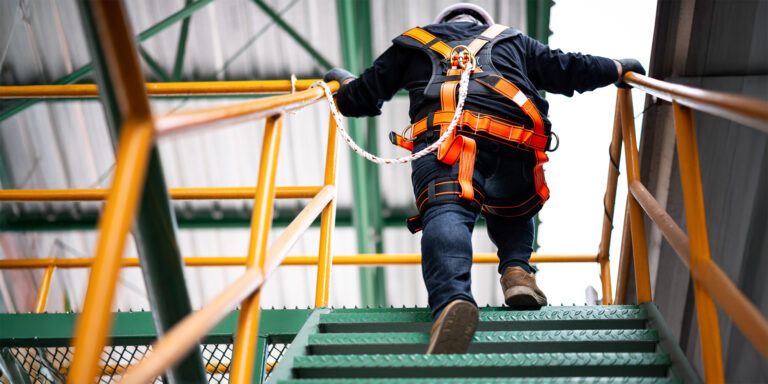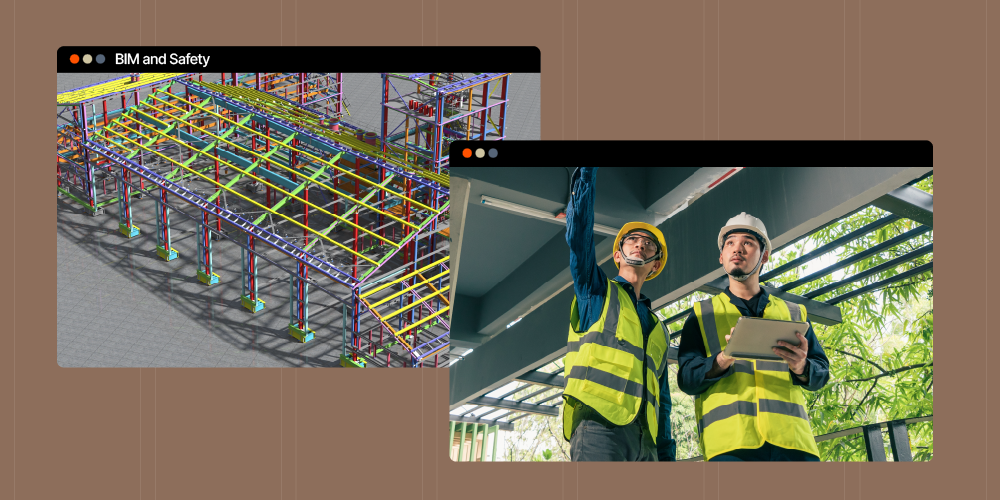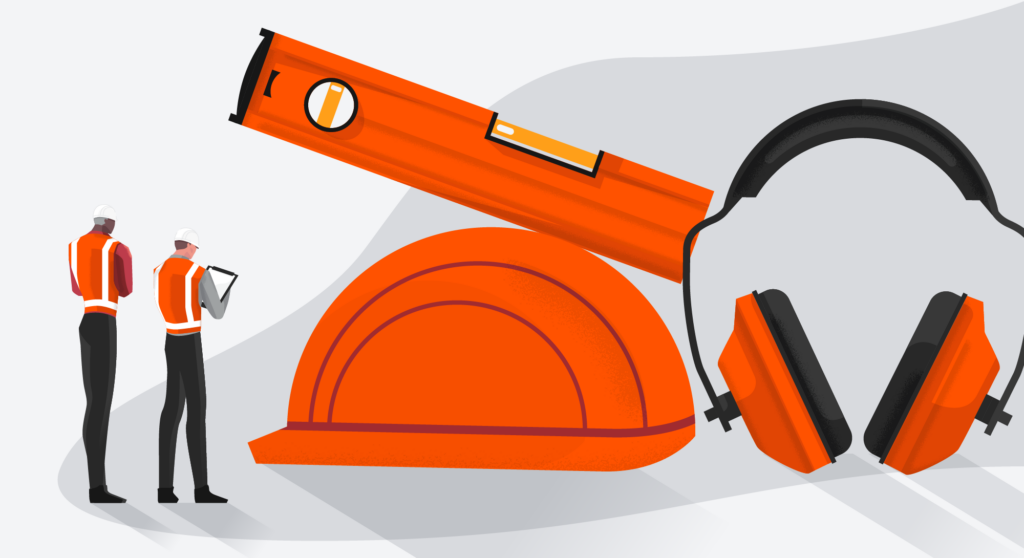— 7 min read
Safety Synergy: Uniting Core Construction Values
Last Updated Feb 7, 2025
Last Updated Feb 7, 2025

In construction, project teams are highly focused on successfully delivering each project on time and within budget, placing priority on productivity, efficiency and delivery.
As the traditional paper-based world of construction becomes increasingly technology-driven, projects are becoming streamlined while leaders gain significant visibility into their organization’s performance. With data and clarity around budget and schedule, decision-making about these areas becomes easier. However, forward-thinking leaders understand that the fundamental aspect of safety must not be forgotten in order for their businesses to thrive.
Not only should safety be prioritized, but it must also become a connective tissue that threads throughout operational plans and team structures.
This article explores the interconnectedness of safety, productivity, quality and culture, and how each area is strengthened and better positioned for project success, creating a competitive advantage for companies.
Table of contents
Evolving the Three-Legged Stool Concept
Professionals in safety roles have often used an analogy of safety, productivity, and quality as the three legs of a stool, each lending critical support while interdependent on the others.
It’s an old phrase that connects a lot of dots for people. Safety, productivity, and quality are like a three-legged stool. Safety professionals understand that safety as a discipline can't just be in its own silo. So, this concept is being dusted off and made new.
Abby Ferri
Senior Leader
National Safety Council
In fact, many are evolving this three-legged concept into an enhanced structure that adds an additional and very integral component.
This fourth leg — culture — helps to transition from a balanced stool into a stronger, sturdier table capable of bearing the complex demands of modern construction. And with safety, productivity, quality and culture reinforcing each other, projects are highly optimized for favorable outcomes.
Understanding how productivity, quality and culture are all interdependent on safety provides necessary proof points for why safety must be prioritized as construction companies evolve in the modern world.
Boost Productivity by Creating a Culture of Safety
Companies that integrate safety as a fundamental part of their project planning often experience smoother, faster operations with fewer interruptions. This proactive approach challenges the old notion that safety slows productivity. In fact, safety and productivity can be powerful allies. Construction sites with comprehensive safety programs may report fewer incidents, which correlates with higher productivity and lower absenteeism.
These projects often avoid disruptions that stem from incidents, equipment issues, or unplanned rework.
Some strategies for achieving synergy between safety and productivity are:
1. Integrate safety into early phases of every project.
Pro Tip
For less struggle during a project with safety, you have to have safety involved at the estimating stage. The earlier safety can get involved, the better.
To build a robust culture that prioritizes safety, companies must consider safety from the earliest stages of a project. Integrating safety into the planning process from the start allows teams to map out workflows that naturally align with safety protocols.
By involving safety considerations in early stages like estimating, bidding, and preconstruction, teams are more able to foresee potential challenges, ensure the right resources are in place, and identify and address potential risks before they impact the schedule.
2. Embed safety into ongoing end-to-end project plans.
When safety is woven into daily discussions — not as a separate item but a part of the work itself — this approach helps meet productivity goals without compromising safety and helps create a culture where quality work is sustainable.
While aiming to weave safety into daily discussions, consider a crane lift plan as an example. If a crew is scheduled for a crane pick, safety shouldn’t be a checklist — it should be threaded throughout the work plan itself. The plan should inherently cover everything necessary for both the work and its safety. This means that while reviewing the lift details, the team confirms operator certifications, equipment inspections and every precaution required in one unified conversation.
3. Discredit the perception that fast work is good work.
The perception of time pressure can be just as powerful as actual deadlines. When workers feel rushed, even unnecessarily, there’s a natural tendency to cut corners or skip safety steps. This perceived urgency, not always rooted in reality, can compromise safety and lead to costly mistakes or incidents, ultimately slowing down the project and impacting productivity.
I've been on jobsites where a person is praised because they're bouncing with activity, but then they're out for two weeks because they got hurt. The perception of rushing...it's a psychological push, even when the push isn't there.
Abby Ferri
Senior Leader
National Safety Council
Effective planning and clear communication can counteract this perception. When project timelines are shared transparently and workers understand how their tasks contribute to the bigger picture, they’re less likely to feel that unspoken pressure to rush.
Regularly updating teams on progress and upcoming deadlines helps maintain a steady, safe pace, reducing stress and enabling workers to complete tasks thoroughly and efficiently.
When safety and productivity are seen as mutually supportive, workers feel empowered to focus on doing things right rather than just getting them done quickly.
The Relationship Between Safety and Quality
Safety is never just about preventing incidents. Safety drives quality work, enhances the deliverability of a superb product, and helps showcase your firm’s commitment to excellence.
Here’s how collaboration between safety and quality strengthens project outcomes.
Reduced Rework and Lower Safety Risks
When quality standards are upheld from the start, projects avoid the costly rework that can expose workers to additional safety hazards. Minimized rework means fewer instances where workers must revisit tasks at a site where the original project teams and necessary supervision may no longer be in place.
Avoiding Conflicts and Delays
By integrating tactics such as quality inspections and safety stand-downs into the project timeline, teams can proactively catch issues early, avoiding delays and rework. This not only keeps projects on schedule but also minimizes the chance that rework could conflict with parallel workstreams.
Higher Efficiency and Consistency
Clear quality standards, communicated from the outset, empower teams to work more efficiently and effectively. With established expectations, workers can focus on meeting quality goals without compromising safety, driving consistent performance and enhancing project outcomes.
Improved Collaboration and Accountability
When safety and quality teams work together, they build a cohesive approach where high standards for quality align with safety protocols. This collaboration ensures that quality and safety are not competing priorities but complementary, creating a shared sense of responsibility and accountability across the project team.
These outcomes make the case that integrating safety with quality doesn’t just improve immediate project metrics but also builds a stronger foundation for long-term success in construction.
Courses about construction.
For construction.
Unlock your career potential with our free educational courses on Health & Safety, Data in Construction, and more.
Committing to a Strong Safety Culture
A strong commitment to safety can only serve to enhance a positive culture.
On a job, safety and quality are best friends. Safety has to be an integral component of culture, ingrained in how the company operates.
Abby Ferri
Senior Leader
National Safety Council
Creating a culture of safety begins at both the leadership level of the organizations and jobsite leadership, with a top-down commitment where leaders openly value and prioritize safety. Here are some strategies for collaboration between safety managers and leaders who want to have a positive impact on culture.
- Leaders should model a commitment to safety by inviting safety managers to have a voice at the leadership table. By prioritizing safety in strategic discussions, leaders set the tone for the entire organization, demonstrating that worker protection, positive environment, and project integrity are priorities.
- Safety needs to become inseparable from performance. Embedding safety measures into performance reviews also reinforces this cultural commitment. By setting safety habits as performance metrics and rewarding those who exemplify safe practices, companies encourage individuals to actively prioritize safety in their daily work.
- Technology can strengthen a culture of safety even further. Tools such as AI and machine learning help identify safety priorities by removing bias and interpreting safety data objectively. High adoption rates where users are active frequently—recording daily logs, observations, and hazardous conditions, for example—not only correlates with safer job sites but also serves as a platform from which to identify and evaluate safety metrics and performance, further enhancing a company’s culture.
A Safety-First Approach for All
Making sure that safety, productivity, quality and culture aren't isolated but integrated across all levels shifts responsibility from individual departments to the entire organization. By fostering an inclusive, supportive culture where every worker feels responsible and accountable, companies lay a foundation that doesn’t just prevent incidents but also drives excellence.
This safety-first approach is the key to sustaining long-term performance and building a reputation as a leader in construction.
this is part of the series
The Construction Safety Training Playbook
Was this article helpful?
Thank you for your submission.
0%
0%
You voted that this article was . Was this a mistake? If so, change your vote here.
Scroll less, learn more about construction.
Subscribe to The Blueprint, Procore’s construction newsletter, to get content from industry experts delivered straight to your inbox.
By clicking this button, you agree to our Privacy Notice and Terms of Service.
Categories:
Tags:
Written by
Abby Ferri
Abby Ferri is an influential and award-winning expert in global risk management and worker safety with more than two decades of experience. She is a passionate advocate for advancing women in EHS leadership, ethical technology integration, and STEM education, co-founding the globally recognized "Safety Justice League" podcast and authoring two books. Abby also serves as an adjunct professor and is active in her local community, contributing to advisory groups focused on thoughtful AI strategy and equitable access to STEM careers. Her leadership and innovative approaches continue to shape the future of workplace safety and education.
View profileLindsey Salmony
Lindsey Salmony is a writer and marketing manager with a passion for finding and celebrating the human stories behind resilience and innovation. Her work has appeared in various publications including Engineering News Record, CFMA’s Building Profits Magazine, Industry Dive, AHP’s Advancing Philanthropy, and The Giving Institute’s Member Insights Blog. A native of New England, she has a proven track record of successfully navigating cars through rotaries and cracking lobsters at the dinner table. Outside of the office, she can be found alongside her husband cheering for her children in team sports and championing their growth mindsets.
View profileExplore more helpful resources

The Strategic Partnership Between Construction Safety and HR
A construction safety manager’s role is significant: It entails broad oversight over the construction workplace to prevent incidents that could cause worker injury or property damage. In addition to this...

Enhancing Construction Safety with BIM Technologies
The construction industry is no stranger to tools: Even ancient civilizations developed mallets and axes to make their work easier. Today’s latest tools look different, but they can be as instrumental...

Construction Safety Training – Goals, Benefits & Emerging Trends
Construction safety training (CST) educates workers about the risks they face on construction sites and teaches them how to prevent accidents, injuries and fatalities. The construction industry has the highest...

Technology for Construction Safety: Strategies to Supercharge and Scale Safety Practices
The construction industry is no stranger to the arrival of new technology, and builders are realizing its many benefits. Modernization across the industry is helping contractors streamline operations, enhance efficiency,...

